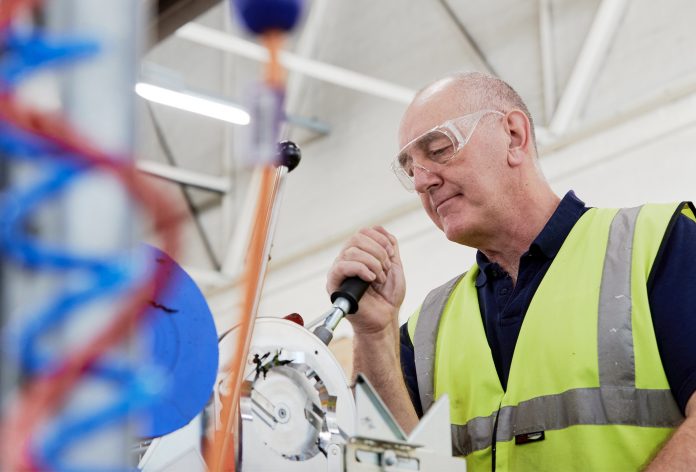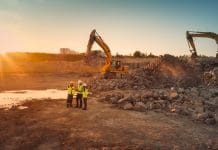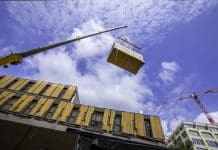In this article, Polypipe Building Services managing director Andy Cullum explains how manufacturers can embrace new offsite construction methods to support their customers and ensure their products play a full role in a more sustainable supply chain
Commercial construction projects have well-established processes and methods – in many cases dating back decades. There is good reason for this, as they are proven and help to make work safer and more efficient. But in recent years, the industry has seen major challenges and change, not least the drive to ensure a greater level of sustainability across all aspects of projects, from the production of materials to their transportation, installation, use and eventual disposal.
It’s understood that the built environment accounts for around 25% of the UK’s total greenhouse gas emissions. Everybody involved in the industry must find ways to help reduce this figure in line with our country’s net zero carbon goals. We believe that offsite construction methods can play a key role in achieving this, not least due to the complexity and tightening standards demanded of commercial buildings. By handling more of the construction process in a controlled factory environment, projects can benefit in several ways.
On-site assembly can lead to further complexities and waste
For example, consider the challenges in refurbishing apartment blocks – a common project in the UK, given the ageing and inefficient nature of many buildings. These are, by their nature, complex projects. But traditional techniques – in the case of drainage systems, this means assembling loose components on-site in a reactive way depending on the requirements of each room you encounter – can lead to further complexities and waste.
Added to this is that the older a building is, the more likely that what’s found on site differs from the original plans – if these plans are still around. Bathrooms may have been moved or reconfigured; additional appliances may have needed extra drainage. This adds up to a range of challenges unique to each project, and the potential for time-consuming surprises if a traditional approach is taken and they are dealt with as they are encountered.
This leads to not only more disruption for building owners and residents but also the potential for a lot more waste from offcuts as pipes are cut to shape room by room. The solution to these challenges often lies in how projects are planned and how newer methods of manufacturing drainage stack components can be used to help reduce the need for cutting work on site.
How offsite construction methods can accelerate efficiency and sustainability
This is where offsite construction comes into its own. By fully assessing the building’s layout and existing drainage system, an engineered design can be produced that clearly lays out what pipework is needed and where.
A manufacturer with the right skills and equipment can then produce and supply recurring drainage configurations and bespoke angles and joints commonly for any particularly challenging sections. These tailor-made systems can then be delivered to the site – avoiding the waste created from offcuts and minimising transport emissions as fewer products will be required.
New build projects can reap similar benefits in terms of efficiency and sustainability if manufacturers specialising in offsite construction are consulted early enough. This early collaboration with all those involved in the building design means that the best solution can be found to minimise waste and the volumes of products needing to be transported to site. Recently we made some non-vertical stacks for a customer because they had back-to-back toilets and needed something six metres long and horizontal. We made them to this exact specification, and the bespoke stacks were dropped straight in and installed in hours.
In another flagship project we’re currently working on in Manchester the customer wanted fabricated stacks so the bathroom pods could be pre-built before going to site. We went to their office and mocked up a stack for them, which they could take to their pod manufacturer to make sure it was the right fit. With about 20-bathroom pods per floor, this meant significant savings, because if these were done the traditional way it would have taken a week to cut loose components to size and install, but this way an entire floor can be connected in about half a day.
Manufacturers must ensure that they are making the right choices across their operations
It’s also important that we don’t see the sustainability benefits of offsite construction methods in isolation. Manufacturers must ensure that they are making the right choices across their operations, from the energy and raw materials they use to how their products are transported and ways to minimise waste, or at least ensure it is recycled back into the supply chain.
We recently invested over £2.4 million in a new production line capable of handling recycled material from PVC windows high grade consistent post-consumer PVC to produce soil and waste pipes with up to 65% recycled content. This material would typically have been disposed of as waste previously.
Not only does this mean we can reduce our reliance on virgin raw materials, but it will also reduce the volume of waste going to landfill.
This investment is in keeping with our aim, as part of Genuit group, to help the construction industry to build better. By 2025 Genuit is targeting for 62% of total materials used in its products to come from recycled sources and to achieve a 66% reduction in CO2 emissions.
This evolution in Terrain PVC will play an important role in achieving both of those goals and we hope that a fully circular process could be established for many of our products and that the same is done across the full spectrum of building product manufacturers. Steps such as these are important to complement smarter, modern building techniques such as offsite construction.
Establishing a more sustainable construction industry is something that is in the interests of the whole supply chain. If suppliers such as Polypipe Building Services play their role in the early stages of the products lifecycle, it will make it easier for designers, construction managers and engineers to meet the demands of both their clients and our planet to reduce greenhouse gas emissions more rapidly.

















